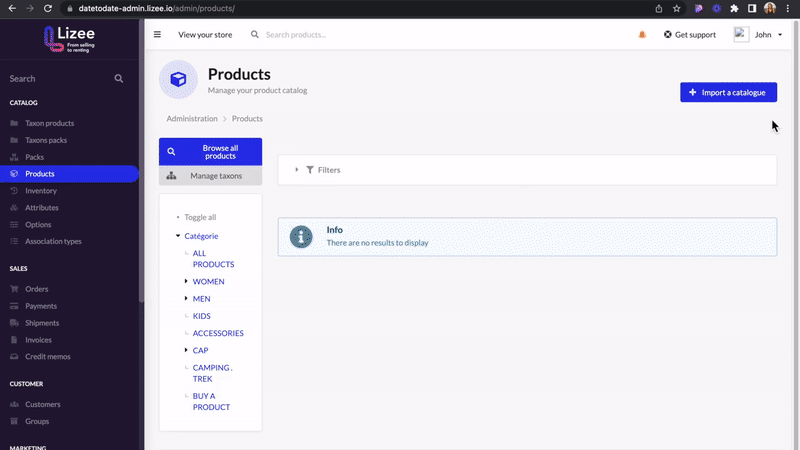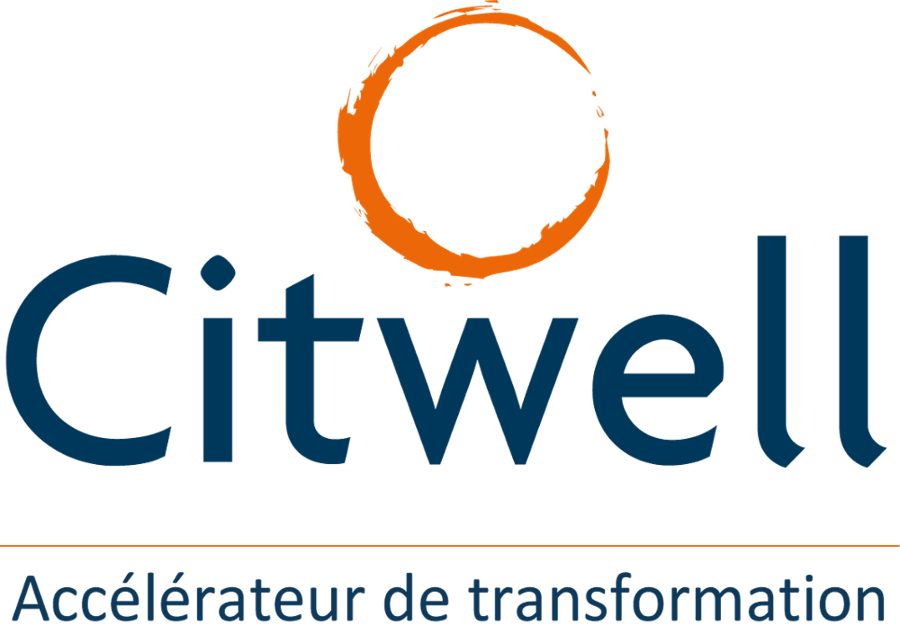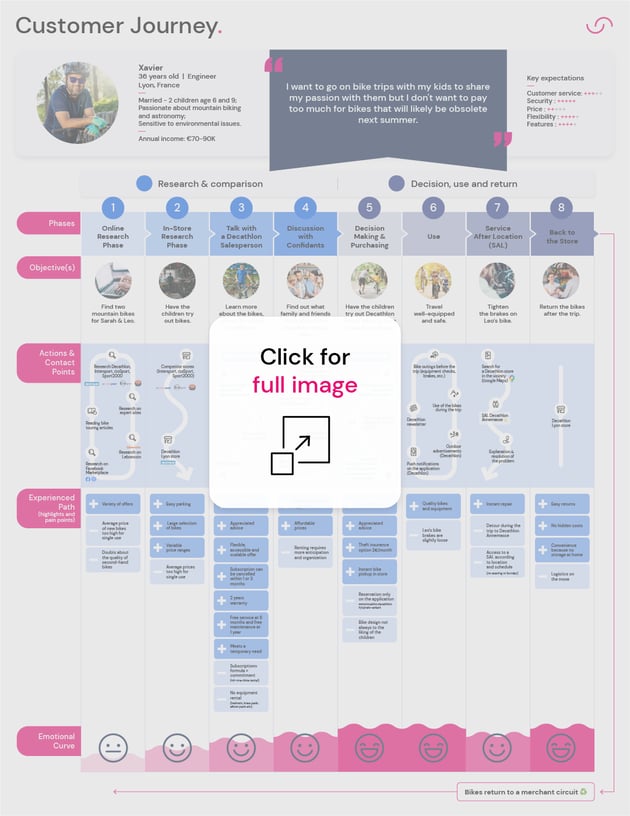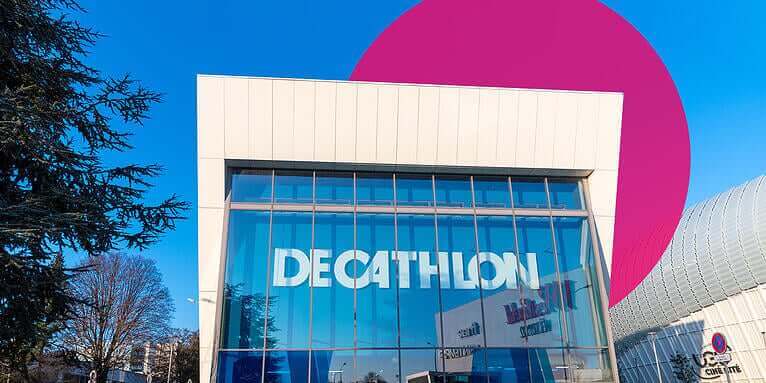Retailers:
9 key steps to move to the circular economy
Retailers:
9 key steps to move to the circular economy
Inès Filippigh

Understand the issues
Gartner estimates that the circular economy will completely replace the linear economic model by 2029. Although, research from the NPO Circle Economy outlined that only 8.6% of the global economy operated circularly in 2020, down from 9.1% in 2018. This drop is quite significant, given that the trend towards a fully circular economy is projected to increase rapidly.
However, the transition could speed up soon. For example, the health crisis has highlighted the flaws of a feverish system, and the attractiveness of retailers is oft-threatened, partially due to climate change and the increasing number of consumers who don't like current offers available to them. According to a study conducted by the European Commission in the last half of 2020, environmental concerns influenced the purchasing decisions of 56% of European consumers. As a result, they are turning to alternative shops and are gradually deserting traditional ones.
For Anaïs Leblanc, Citwell's Associate Director, this shortfall is not irreparable:
"Retailers who control production have all the keys in hand to remain competitive by rethinking the system. They must transform their value chain to move towards a sustainable business model and make a circular pivot."
According to her, this involves transitioning from all-disposable to all-reusable. Rather than selling the product itself, companies need to focus on selling its use.
"On repeat rentals of good quality products, for example, the profitability potential can be up to 9 times higher than the standard linear model. As product lifetimes increase, prices can decrease, creating a win-win situation for customers. This also puts positive pressure on the upstream chain, from product design to manufacturing, on an ecological and social level."
Study the market
Decathlon, a global leader in sports and leisure products, called on Citwell to help reinvent its business model and transform its entire value chain. It's only natural that France's favorite brand has conducted market research on European brands with circular business models to draw inspiration from their practices. Regardless of industry and especially in this undeveloped field, the experiments of some are the source of inspiration for others.
Let's take the example of internet service providers. They have a well-designed circular system of product recovery: consumers use an internet access box for the duration of their contract, and when they cancel or change provider, they return it. No one owns their Internet access box; everyone is simply a temporary user. The provider then has two options: either it sends the box to another consumer or recovers whatever recyclable materials it can and uses it to upgrade or re-tool other boxes later.
For a producer-retailer, the challenge is similar: you have to reinvent your production chain to make it circular, breaking down each step instead of focusing solely on the final product. In other words, you must know how to recover and reintegrate a product into the market, like a loop. For Decathlon, a major retailer in the circular economy, market research and modeling were paramount. The research and analysis led them to discover the best practices in logistics: How far away and next to which stores should their repair or refurbishment centers be located? What are the typical recovery channels? How can they optimize this chain depending on their products and brands?
|
Potloc conducts market research on B2B and B2C audiences, locally and internationally. Get fast, reliable results along with detailed analyses. |
Review design and production practices
Once the lessons are learned, it's time for action. How can companies review their design and production practices to become circular? According to Anaïs Leblanc, you must first question your products, choice of raw materials, and suppliers. The challenge is to listen to consumers' needs, prioritize quality over quantity, analyze ease of repair and availability of components, and prioritize local production over imports without threatening your pricing policy.
This requires a reinvention of the role of product designers: rather than thinking about the best value for money for a single-sale product, it is a matter of adopting a mindset revolving around sustainability, and consequently, around better quality as well. The ecological and social impacts must also be taken into account – In short, retailers need to revolutionize. For technical help, companies can rely on the support of the Ademe, an institution that helps retailers turn circular, and well-established centers of excellence in France, such as Eco-Conception in Grenoble.
As for production, contrary to popular belief, "regionalizing" one's factories (when production allows it) has many benefits: Better control of costs and deadlines, lower transportation costs, time savings, simplified coordination, more appropriate management of industrial and geopolitical risks, a smaller carbon footprint, lower waste treatment costs, etc. In France, many companies have already taken the initiative to relocate. Le Coq Sportif, THOMSON, Rossignol, and Kusmi Tea have all resituated some or all of their production to focus on 'Made in France' items.
In short, design and production challenges affect both R&D departments and the supply chain. Whether for the transformation of the design or the production footprint, Anaïs Leblanc recommends paying particular attention to change management:
"We need to give meaning to the teams and not make them think that they have 'done wrong' by participating in creating the previous system. Even if they have to reinvent certain habits, this transition cannot succeed without their previous knowledge of the products and their intrinsic motivations."
Create new customer paths
The major retailers making a circular pivot and proposing new eco-responsible offers (second-hand, rental, etc.) are committed to creating new customer paths. But new means perfectible: if the usual points of contact between the customer/user and the brand/service have already been disrupted by the digital revolution, the circular pivot can cause an increasingly profound change in usage and consumption habits.
For retailers, the challenge is to lead customers towards new circular offers while optimizing their journey and limiting friction from the first contact. Otherwise, they risk losing the customer's interest as quickly as they created it. Creating a fluid circular 3.0 journey requires implementing new physical devices and websites to serve users. Lizee or Ziqy platforms can meet this need.
These new tools in the buying journey must be user-centric and not technology-centric; the goal is to understand the potential consumer disincentives and respond instantly with the help of digital devices. Consumer expectations include the speed of service, cross-channel devices (resulting in a seamless effect), retailer reactivity and proactivity to any problem, and a high degree of customer autonomy.
The outline of this journey, in practice, can help you hone in on your consumers' needs. From the knowledge accumulated about your target audience, you will be able to build a map according to the following criteria:
- The stages of the journey from the customer's point of view
- Customers' objectives
- Actions and contact points
- Experienced journey (customer delight + or pain points encountered -)
- The emotional curve, or "dramatic intensity" at each stage
- Detection of "customer moments of truth" and moments to prioritize ⭐️
Let's take an example of a father who is passionate about mountain biking (let's call him Xavier) and would like to take his two children (Sarah and Leo) with him on a bike trip. His two children are 6 and 9 years old and have city bikes unsuitable for bike touring. Xavier is now looking to buy two mountain bikes for his children.
The critical moments of the customer journey (⭐️) are the contacts with salespeople, targeted ads, the use of the mobile application, and the SAL (service after location). To make this journey smoother and more memorable for the customer, here are a few ideas: a promotional campaign for rental services (social network ads, display, etc.), the involvement of a UX-UI Designer for the mobile application (with a satisfaction survey at the end of the payment), and partnerships between Decathlon and bike repair centers to increase the number of centers close to customers and limit inconvenient travel.
Reinvent internal management tools
Undoubtedly, the biggest challenge for producer-retailers is to source, design, sell, recover, and reintegrate used products into a commercial circuit. Sometimes, it is necessary to adapt or replace internal management software (in particular with a Warehouse Management System software for warehouse management) to act on all these steps. Suppose the software usually used by the most prominent retailers (Mecalux, Vin eRetail WMS, NetSuite, HighJump, etc.) allow them to only manage stock and handle invoices. In this case, they do not entirely meet the needs of a circular company.
To address this, one or more modules (in the form of web or mobile applications) for vendors and repairers should also give them the ability to:
- Recover a product
- Carry out its diagnosis
- Assign a status to it
- Follow the steps to repair it
- Indicate where to store it
- Invoice it internally (or to a customer)
- Accurately manage the margin generated
Choosing the right enterprise resource planning software means breaking down your business needs into several categories. For a 360° vision, Lizee offers reliable and secure software that helps retailers make a circular pivot by proposing a SaaS in 3 ways: a re-commerce website adapted to rental and/or second-hand (front office), back-office monitoring (product catalog management, payments, etc.) and logistics monitoring (inventory management, orders, carriers, returns, etc.). Lizee promises retailers a two-month launch, global management of re-commerce logistics operations, and full visibility into the company's profitability KPIs that guarantee CSR impact and cover ESG risks.

Decathlon, for example, has chosen Lizee to rent its Forclaz trekking equipment and, recently, its Quechua camping equipment. In an interview for Challenges Newspaper, Yann Carré, head of the rental project at Decathlon, said:
"Lizee allows us to outsource and be very fast (...) Large companies are not agile; it is difficult to implement projects that are not at the heart of their business model. With Lizee we are learning; we are in an exploratory phase." Similarly, CircularX offers a SaaS platform that allows retailers to resell their products easily.
Waste management is another major challenge for retailers due to the extension of the laws on Extended Producer Responsibility (EPR), requiring them to organize collection and recovery channels at the end of the life of the products they sell. Management tools like Unico and AMCS offer information systems that facilitate the daily management and monitoring of all information and operational collection services. Once the tools have been selected, the next step is integrating them and optimizing user training (online training, internal conferences, satisfaction evaluation, etc.).
Gain remediation skills and meet legislative standards
Like a loop, producer-distributors refurbish incoming products previously used by someone else. This process requires specific skills, human resources, and facilities. For some industries (e.g., electronics), the process is more straightforward, as the condition and value of each component are already clearly defined.
The task is more complex for other sectors, such as the textile industry. The restorative work can be much more tedious, even for just the varieties of material. Cotton, for example, can be mechanically shredded into fiber and then passed on and reused for weaving or knitting. However, if this material is mixed with synthetic fibers, it will be almost impossible to process.
For Decathlon and all other textile players, refurbishment applies to textile fibers compatible with existing processes. But, if the resale of products is the main priority, companies can put rental schemes in place. Since 2019, Decathlon has implemented a brand new circular offer allowing users to take possession of camping equipment for the duration of their trip and then return it to Decathlon to give to the next person.
As for legislation, companies must be vigilant. Even if new laws are passed, they do not always cover the conditions for the changes in production nor consider the territorial or fiscal developments necessary to support the initiatives. Citwell is currently drafting a plea to members of parliament with the National Institute of Circular Economy in France. The objective: open the discussion about the circular economy in the political world to align both ambitions and reality.
Convince your shareholders
Deconstructing previous performance benchmarks is one thing, but convincing your shareholders to make a change is another. While most retailer shareholders expect results in five years on a linear value chain, the circular economy stretches these deadlines to a decade. Investors need to be clear about the gravity of this economic issue because it's not a question of reaching a break-even point as quickly as possible, but instead being a part of a longer-term (and still) profitable strategy.
In fact, the circular model (often aligned with the idea of degrowth and "unprofitable") presents multiple opportunities on the economic front. According to a report by the Mac Arthur Foundation published in January 2018, it could allow Europe to generate a net profit of €1.8 trillion by 2030, €900 billion more than following the current economy's model. Also, the consulting firm McKinsey outlines, the potential of this emerging economy could amount to 380 billion dollars per year in raw materials in Europe. According to France Stratégie, more than 800,000 jobs will be created in France due to the uptick in local fabric production and the need for R&D expertise.
Lastly, an analysis by Bocconi University of more than 200 publicly traded European companies in 14 industries indicated that the more circular a company is, the less likely it is to default on its debts. The return on investment is also higher. So if the environmental argument alone is not enough, then the profitability and job creation arguments may resonate with your stakeholders.
Launch in the circular economy
Only a small handful of retailers have dared to take the plunge. Some attempted the transition a few years ago but did not meet the expected demand because their offer was incomplete. Anaïs Leblanc explains:
"Small initiatives are not enough. As long as there are extremely irregular flows and small volumes, profitability will not be there. That's the challenge for companies: if they want to get out there and be profitable, they have to do it fully."
Let's take a hypothetical example: the margin generated by the recovery of Decathlon bicycle luggage, its restoration, and its reinsertion into a commercial circuit is too low to be profitable. The costs of setting up an in-store system and a recovery circuit are too high compared to the margin generated by small volumes of products. The approach is not significant enough to attract the interest of a large number of consumers. Although, creating a complete system for all QUECHUA brand camping products could be profitable.
The same goes for rental devices. Decathlon understands this concept well, as they've had a rental service for camping equipment in place for several years. This service meets a real need: to offer customers an intelligent service focused on usage. The consumer is free to choose; they can rent a single product (such as a tent, a sleeping bag, etc.) for their trip, or they can access "pack" offers that meet a specific need, like the "bivouac pack," the "family camping pack," or the "vanlife pack."
Conduct consumer research
More and more consumers are turning to alternative modes of consumption and purchasing in bulk resource stores. These stores include Leboncoin for a range of second-hand goods, Back Market for refurbished electronics, Biked for parts and equipment for cyclists, and Vinted for second-hand clothing and accessories. In January 2021, Vinted had more than 37 million registered European users, compared to 30 million in January 2020 (+24%). Regarding food, bulk stores and local producers are also gaining traction. However, this craze for alternative consumption methods does not prevent retailers from doing well; it's quite the contrary.
"The more competitive the industry, the more likely you are to attract customers on circular offers. If it is important to do market research, especially to define your competitive environment, it is critical to do consumer research. In this case, the focus should be on attracting customers and creating demand, not necessarily knowing what your competitors are currently doing.
For Anaïs, it is necessary to determine the details of your customers needs: "To what extent are they ready to take the plunge themselves? Under what conditions? Under what commitment? And for what benefits?"
To stay in the race and gain market share, creating and integrating circular offers while listening to consumers' needs is vital. For Decathlon, the consumer insights they've gathered led them to conclude that in the eyes of the consumer, "ownership is no longer essential" – its rather an opportunity for the rental services they have implemented in France since 2020. But this is only a small part of the data that will empower them with the knowledge they need to smartly adjust their product and service offerings.





